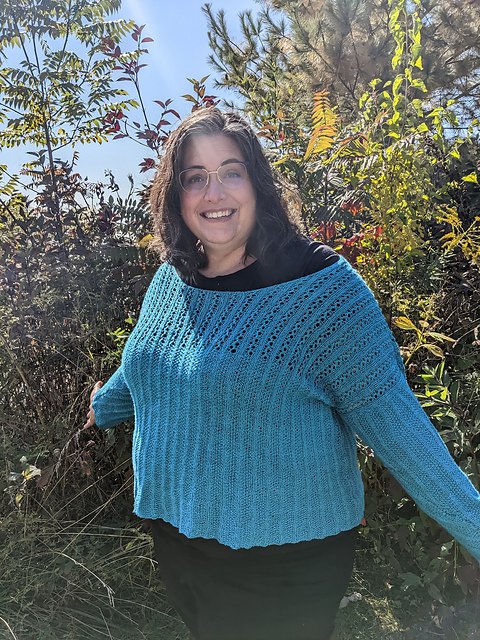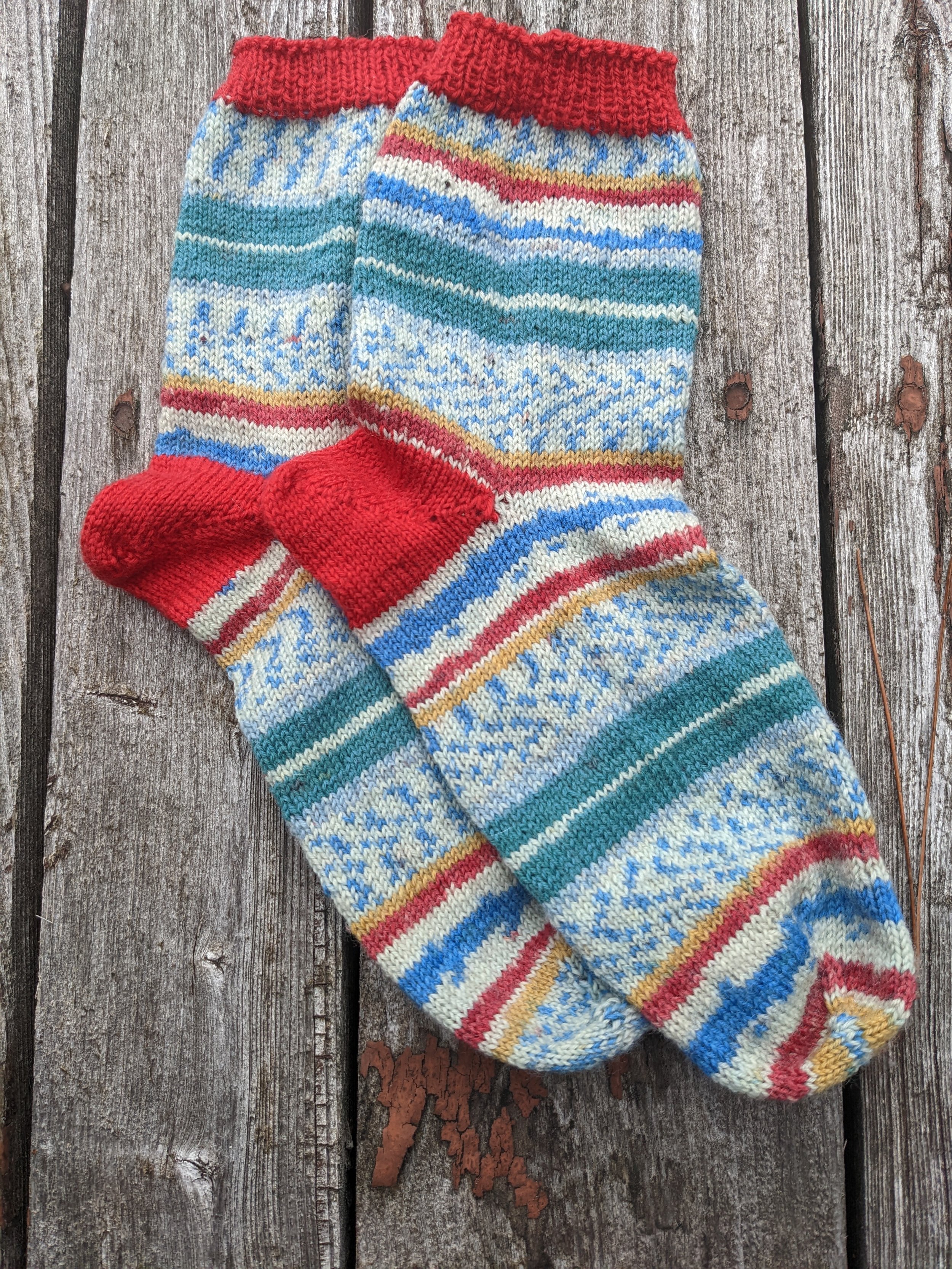We got a new couch this spring at the beach. The oldie had come with the house, and it had seen many, many seasons and was beginning (actually, had long begun) to disintegrate before our very eyes. So, we saved up, looked around, test sat on several and happily found the perfect one made in Canada and available for delivery to our area. It is a truly beauteous behemoth, accommodating five adult humans flomped in repose. It even pulls out into a full-size bed.
A proper flomp, of course, requires pillows. Plenty of pillows. We had a few, but none made by me which seemed like an oversight, so I set to work thinking about colours and textures and patterns. Actually, the very first thing I did was order several 16 inch square pillow inserts from Amazon.
Then, I asked my mom to teach me to sew. There was a great piece of fabric in one of the closets that was leftover from covering part of the record player cabinet, and I want to use it to make a pillow cover. Mom gave a flat “no” on the teaching part, but I could have her machine if I got it tuned up and found someone else to teach me. (Hilarious, and also awesome. Mad respect for my mama. Boundaries, yo.) So anyway, I now have a sewing machine and the piece of fabric is in a different closet. And I learned the basics of machine sewing in a class given by someone-not-my-mom whose shop also tuned up the machine. That’s as far as this digression goes. More in a future post. No pillow cover has yet been sewn. But knitting I can do ALL BY MYSELF! So knit I did.
Big cozy cables
I started by searching Google and, of course, Ravelry for ideas. A key inspiration for my first pillow cover was the Cabled Throw Pillow Cover by Emily Mizer. I loved the two fat cables so I nabbed that idea for my “recipe,” but the yarn I chose and my pillow size meant that the rest of the pattern would need lots of modifications – plus, I wanted buttons. Bernat Blanket Solids, a sumptuously soft bulky weight yarn in a very similar grey to the couch, called to me. From a few aisles over, snazzy orange buttons joined the chorus. I had my materials.
I cast on 36 stitches, with 8 stockinette on either side of the cable section in the middle rather than off-set as in the original pattern. I really like how the cable looks off-set as well but with the ginormous yarn and smaller size pillow, it just wasn’t going to work. Also, 36 stitches still ended up being a bit too wide so I decided to knit the cover in two pieces. The front being the cabled piece and the back being a narrower, stockinette only section for which I cast on 26 stitches. Worked out well, as I knit the front piece longer by a couple of inches and folded it over.
I sewed six of the lovely orange buttons equidistant onto the back of the pillow cover, roughly an inch or so from the top of the pillow. (Honestly I tacked them on roughly at first for trial and error to see where the pillow cover would be happiest.) For the buttonholes, I simply used the naturally slightly loose gauge of the fat yarn to worm the buttons through. Why make things harder than they have to be, right? Worked like a charm. At least I have one pillow cover that is going to be very easy to remove for washing.
La la la lime
Once I had one pillow done, the mission became to make each pillow distinct. I found the next yarn at Len’s Mills and it was a bargain. Five dollars for Cambridge Fibres Ltd. Super Pound Hand Knitting Yarn: that’s right, a full pound of yarn of “unknown fibres” for just a fin. What a deal! And the pop of green was just perfect. Now for the pattern. Back on Ravelry knowing I wanted to use worsted weight yarn this time, my searches soon yielded the perfect choice, the Cabled Stadium Pillow. I was pretty faithful to this pattern overall though I didn’t follow the suggestion of using a second colour to bind off.
Now, I wouldn’t necessarily suggest this yarn for a garment. It’s a little stiff and didn’t have a great hand feel when knitting. But that toughness bodes well for a pillow that gets a lot of love. It might soften right up with a soak in Eucalan or whatever you use for your handknits. I was too impatient and wanted to get the cover on the pillow and the pillow on the couch. Very pleasing!
Shoutout to Holland with the Gansey Pillow
With success using other peoples’ pillow cover patterns, I gained a little know-how and a lot of courage. I decided to make my own pattern, and it was going to be very distinctive indeed. When Dave, the kids and I had travelled to the Netherlands a couple years ago, one of the yarn-related treasures I brought back was a lovely tome entitled Dutch Traditional Ganseys: Sweaters From 40 Villages by Stella Ruhe. Ruhe explains how knitters from the fishing villages along the Dutch coast would create and use their own motifs in their warm wool ganseys (sweaters), which would then be known as being typical of each specific town. While the sweaters used a limited palette of colours - typically grey, black or blue – they had a wide array of delicate, intricate and meaningful symbology behind the motifs. Some evoked protection from God, others paid tribute to the waves, or the tools of fishing, and so on. If lost at sea, a fisherman could then be identified by the designs in his gansey.
I didn’t design the entire pattern in advance, but rather figured out the skeleton, then chose motif by motif as I went. In terms of the skeleton, first I decided that I wanted to work in the round to minimize the seaming. Then I needed to determine what size needles and how many stitches to cast on with the Bernat Super Value Solids worsted weight yarn I was using. The number of stitches would have to divide evenly into an appropriate number to work well with several of the motifs wanted to use. Many of the motifs used a base of 6 stitches but others used 8 or more. It took some mathing! The Cabled Stadium Pillow provided helpful experience for this tinkering. I then calculated how many motifs repeats I would do per round and guesstimated how many motifs I would do vertically. More mathing.
The book identifies and explains many typical motifs and the symbolism behind them. As I built my pattern I went with a combination of which motifs spoke to me, what would look good with the previous motif in the pattern, and which paid direct homage to the seas or other natural elements. Because I was trying to work smart (yay for learning from previous mistakes!), I used lifelines between motifs in case any just didn’t work out and I wanted to frog them.
I AM SO PLEASED WITH THIS PILLOW. It was a true pleasure to work on, and I was so absorbed in its creation. I have all my notes and am happy to share. Just drop me a line if you’re interested. And yes, it’s orange. Dutch orange but also the orange of our very, very orange fireplace (seen here), which no one will let me paint.
Flompworthiness achieved
And thus, I present you an example of a 4 person, 1 canine flomp, though only two of the persons are fully visible. Success!













